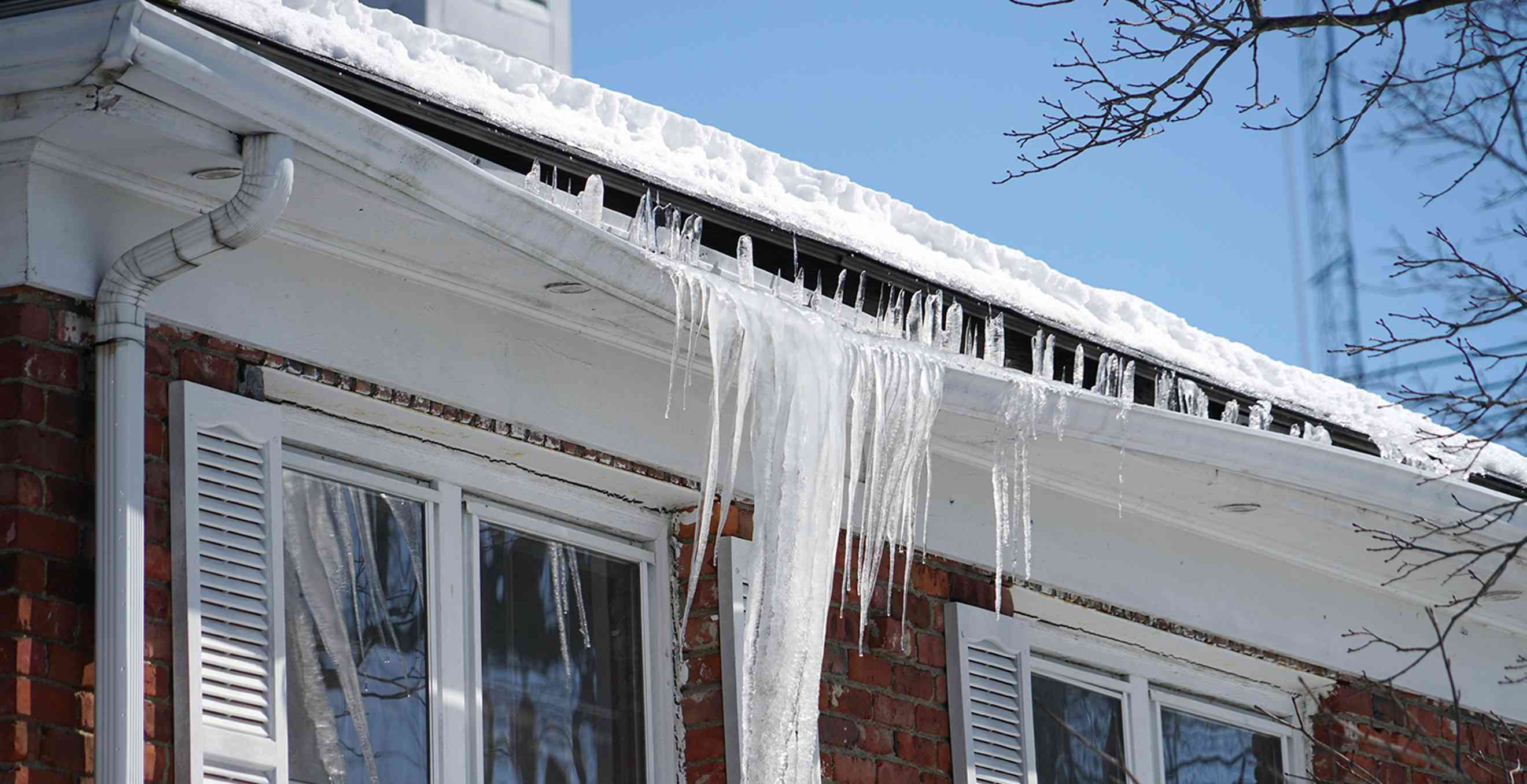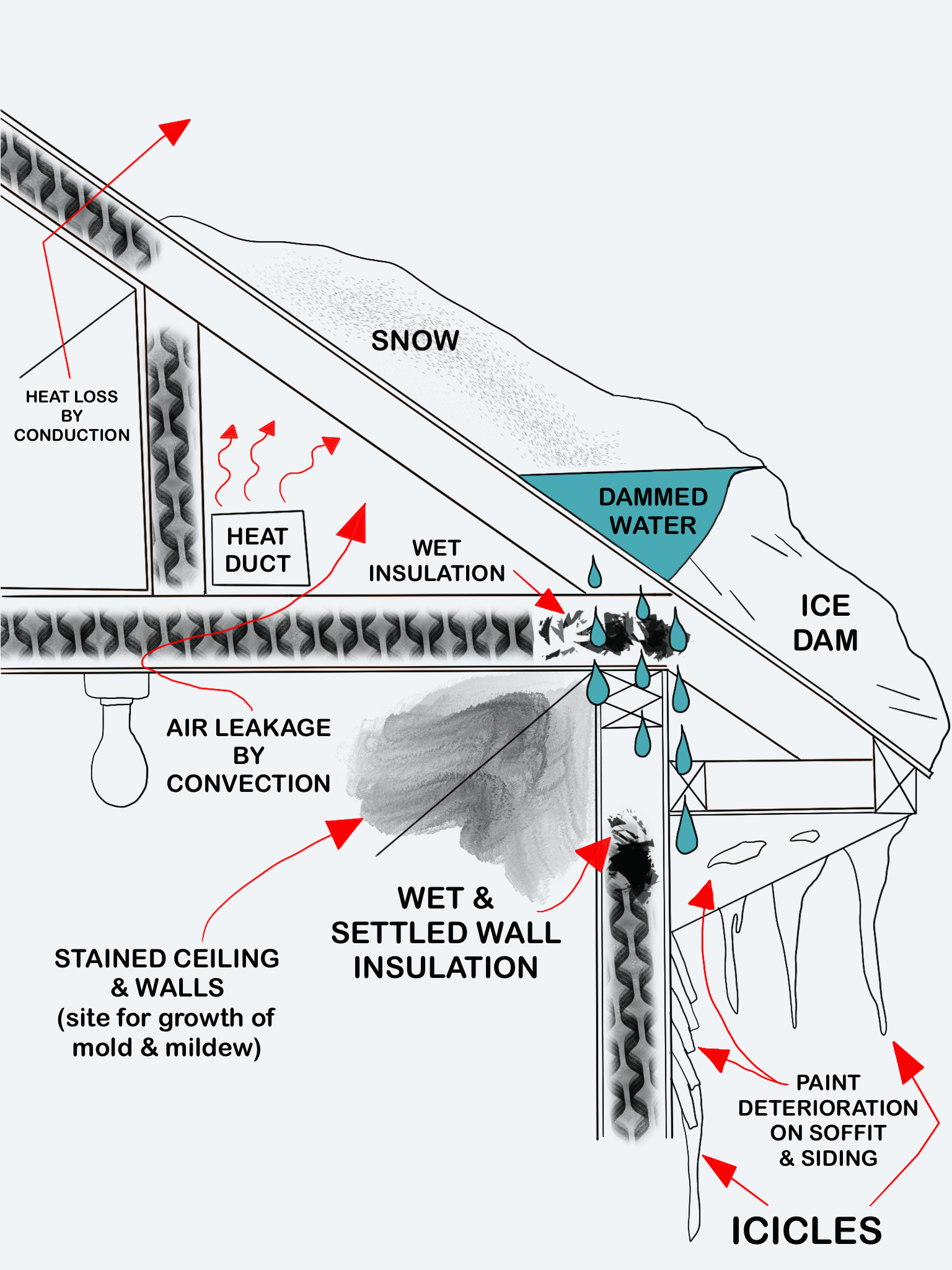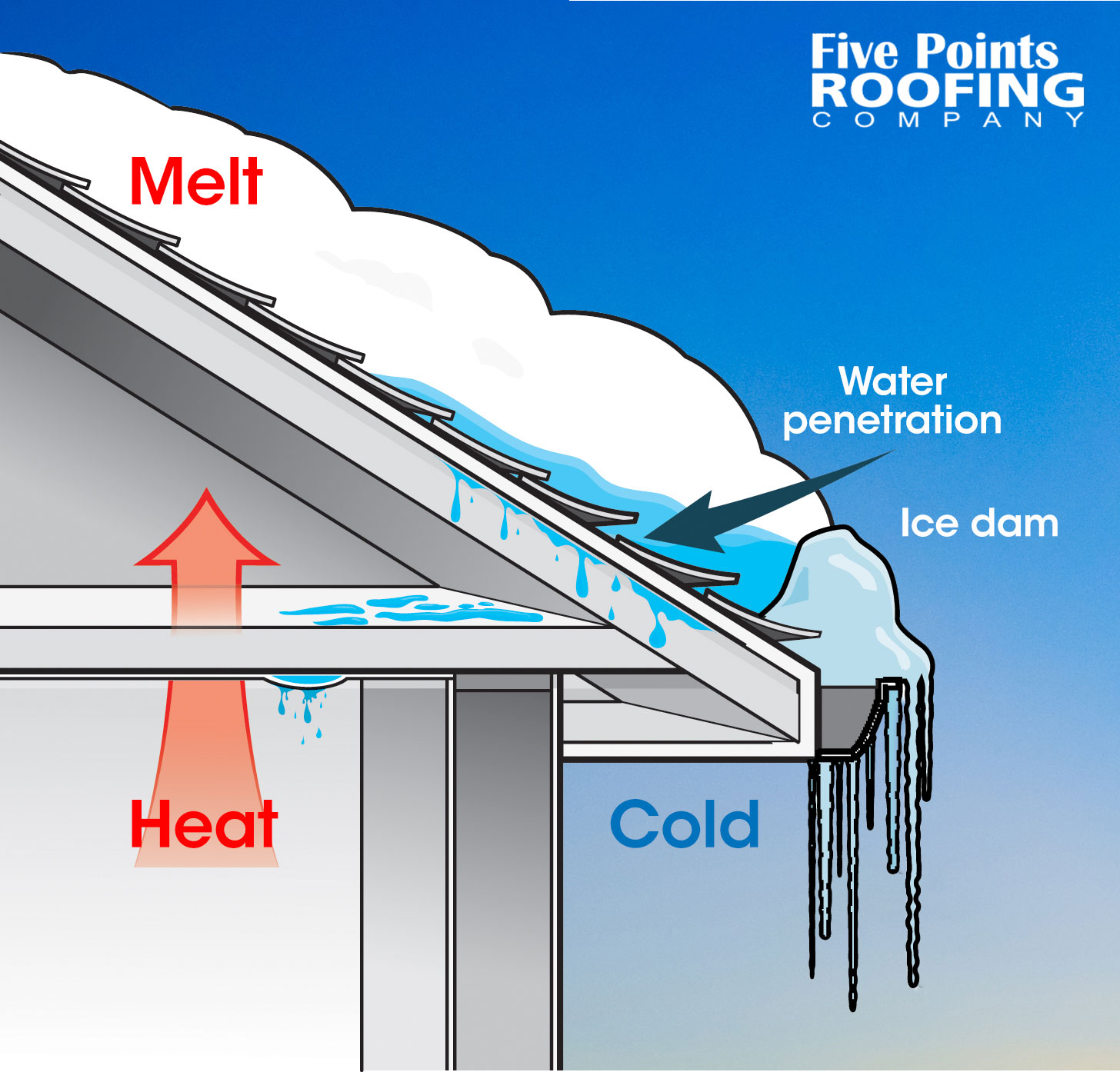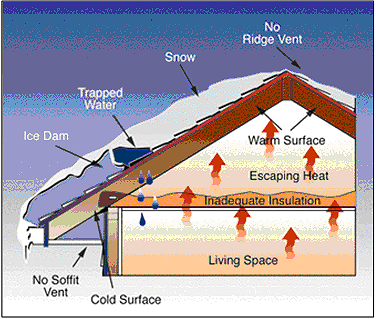- Get link
- X
- Other Apps
Ice dam steaming is a tried and true technique for removing ice dams from roofs. Ice dams are not known to cause damage to anything other than the immediate roof area.
They literally create a dam that keeps ice and snowmelt from flowing properly through your gutters and out your downspouts.

Ice dam on roofs. Homeowners across the city are also worried ice dams will cause costly damage to their homes. Once the sun warms the roof shingles and gutters ice can detach and fall off. The most effective way to prevent ice dams is by ensuring two critical components are in place for your roof and attic.
An ice dam is a ridge of ice that forms at the edge of a roof and prevents melting snow water from draining off the roof. When snow melts on a roof it runs down until it meets the unheated bottom edge of a roof and then freezes. Experts warn there is a right and wrong way to handle snow and ice from rooftops.
About Ice Dams. If necessary use a long-handled garden rake or hoe to push it into position. And they fear the weight of the snow on their roofs could cause structural damage or collapse and icicles will fall and hurt people below.
Ice dams occur when snow on a roof melts but freezes before getting fully clear of the roof. The process converts cold water into low-pressure steam which is then sprayed through a specially designed nozzle melting the ice on the roof entirely. It will put gutters and downspouts at risk too.
Ice dams are formed by melted snow and are typically found around the drains and along the edges of your roof. Over time that ice can build up into a dam that stops water from running down the roof slope causing it to pool and eventually seep into the home. An Ice Dam is a hump of ice that forms at the edge of a roof under certain wintertime conditions.
The water that backs up behind the dam can leak into a home and cause damage to walls ceilings insulation and other areas. Ice dams occur after a heavy snowfall when warm air in the attic causes the roof to warm and the snow to melt. An ice dam is a blockage of ice that forms on the edge of a roof.
How Ice Dams Form on Flat Roofs. If you notice large icicles forming on the corners of your home or gutters thats. Ice dams are mostly formed when the temperatures keep fluctuating which causes heat loss through the roof.
As more snow melts it will also refreeze when it hits the new ice slowly building up a frozen wall that pushes backward up the roof raising shingles and sliding into unprotected roof sheathingWhen a true thaw finally comes the watery remnants of the ice dam will invade the home damaging walls. Then the melted ice and snow can flow through the freshly cleared gutters away from your home. If anything the risk of ice damming is worse on flat roofs due to their unique design.
Its crucial to reduce attic moisture and escaped heat in your attic. An ice dam is a mass of ice that gathers along the lower edge of a roofline where it overhangs the edge of the home. All ice dams form in basically the same way.
An ice dam is a line of ice that forms along the end of the roof onto and above the gutter line and prevents melting snow from draining off the roof. With nowhere else to go water backing up behind an ice build up will find the path of least resistance and trickle down beneath your roofs shingles leaking into your home. Ice Dams are a common sight in Northern New England winters.
Lay the hose onto the roof so it crosses the ice dam and overhangs the gutter. Ice dams are more than just an interesting phenomenon. The calcium chloride will eventually melt through the snow and ice and create a channel for water to flow down into the gutters or off the roof.
Ice dams form at the bottom of roofs letting water penetrate and cause damage to the interior of walls and roofs. This water then follows. These ridges or blocks of ice are created when the snow keeps melting and freezing continuously.
When the air inside an attic is. The resulting damage to insulation ceiling. Roof ventilation in your attic space.
As the snow heats up the under the layer of the snow it melts and causes water to run under the still-frozen snow down to. At first ice dams are just continuous chunks of ice that form along the margins of your roof. Poor ventilation and insulation cause heat to rise from within the home melting water in particular areas.
An ice dam can damage both your roof and the inside of your home. Even during the winter you want airflow working its way through the attic space. The truth is that ice dams arent just an issue for pitched roofs they can form on any style of roof.
Severe ice dams can weigh many hundreds of pounds compromising the structure of the roof eaves. An ice dam is made up of layers of ice that accumulate on the edges of your roof is created when heat rises from a home melting existing snow on the roof. This creates the potential for Liability and damage to persons or property below.
An ice dam is the result of snow that has melted and then refrozen and the culprit for that thaw-and-freeze cycle is an abnormally warm roof. Water running down the roof refreezes when it reaches the colder roof edge forming a mound of ice.
 How To Prevent Eliminate Winter Ice Damming Roof Pro Plus Professional Roofing Blog
How To Prevent Eliminate Winter Ice Damming Roof Pro Plus Professional Roofing Blog
 How To Remove Ice Dams On Your Roof Clearing Ice Dams Iko
How To Remove Ice Dams On Your Roof Clearing Ice Dams Iko
 Dealing With And Preventing Ice Dams Umn Extension
Dealing With And Preventing Ice Dams Umn Extension
 The Dangers Of Ice Dams To Your Roof
The Dangers Of Ice Dams To Your Roof
 Chicago Ice Dams How Do They Form And What To Do About Them Chicago Tribune
Chicago Ice Dams How Do They Form And What To Do About Them Chicago Tribune
/roof-ice-dam-185082486-580507d05f9b5805c2ec2509.jpg) How Ice Dams Form And How To Prevent Them
How Ice Dams Form And How To Prevent Them
 Ice Dam Prevention For Your Roof Five Points Roofing
Ice Dam Prevention For Your Roof Five Points Roofing
 Ice Dams Roof Repair Tips From Garner Roofing Your Baltimore Roofer Garner Roofing
Ice Dams Roof Repair Tips From Garner Roofing Your Baltimore Roofer Garner Roofing
 How To Prevent Ice Dams On Metal Roofs Rare Manufacturing
How To Prevent Ice Dams On Metal Roofs Rare Manufacturing
/cdn.vox-cdn.com/uploads/chorus_asset/file/19913351/Ice_Dam_iStock_155389475.jpg) How To Get Rid Of Ice Dams Prevention Fast Fixes This Old House
How To Get Rid Of Ice Dams Prevention Fast Fixes This Old House
 Ice Dams What Do The Experts Say
Ice Dams What Do The Experts Say
 Ice Damming What It Is How It Damages Homes Heritage Roofing
Ice Damming What It Is How It Damages Homes Heritage Roofing



Comments
Post a Comment